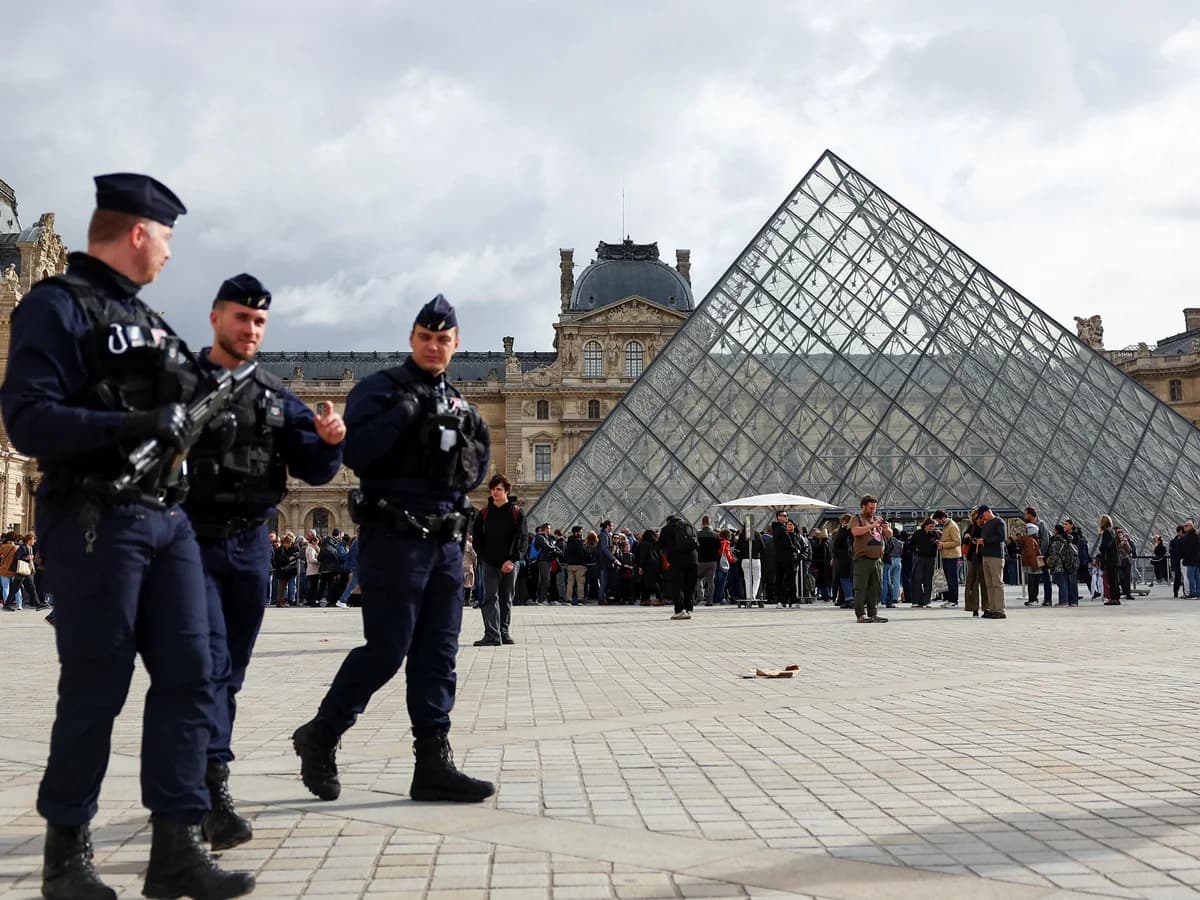We're loading the full news article for you. This includes the article content, images, author information, and related articles.
French authorities intensify their investigation into the audacious theft of crown jewels, with seven suspects now in custody, but the priceless artefacts remain missing, prompting a global alert for their recovery.

French authorities have arrested five additional suspects in connection with the brazen daytime robbery at the Louvre Museum in Paris, bringing the total number of individuals in custody to seven, Paris Public Prosecutor Laure Beccuau confirmed on Thursday, October 30, 2025. The arrests occurred on Wednesday night in Paris and the surrounding Seine-Saint-Denis department. However, Beccuau stated that these recent detentions have not yet led to the recovery of the stolen French Crown Jewels, valued at an estimated €88 million (£76 million).
One of the newly detained men is considered a primary target of the investigation, with DNA evidence linking him directly to the crime scene, Beccuau told RTL radio. The other four are believed to hold information regarding the planning and execution of the heist. These arrests follow the detention of two other men on Saturday, October 25, who have since “partially admitted” their roles. Those initial suspects, a 34-year-old Algerian national and a 39-year-old French citizen, are facing charges of organised theft and criminal conspiracy, which carry potential prison sentences of 15 and 10 years, respectively. One was apprehended at Charles de Gaulle Airport attempting to board a flight to Algeria.
The robbery, which has shocked the art world, took place at approximately 9:30 AM EAT (8:30 AM CEST) on Sunday, October 19, 2025. A four-man gang used a stolen furniture removal truck equipped with an extending ladder and lift to access the first-floor Apollo Gallery. Disguised in high-visibility vests to appear as maintenance workers, two members of the gang ascended to the gallery, smashed an unsecured window, and used disc cutters to breach two glass display cases. The entire operation lasted less than seven minutes, with the thieves spending just under four minutes inside the gallery itself. They managed to escape with eight gem-encrusted pieces before fleeing on motorbikes driven by two accomplices. A diamond and emerald-studded crown was dropped during their escape and recovered at the scene.
The stolen items are of immense historical and cultural significance, including pieces that once belonged to Empress Eugénie, wife of Napoleon III, and an emerald and diamond necklace Napoleon I gave to his second wife, Marie Louise. The collection is considered a national treasure and experts fear the pieces, being so recognizable, could be dismantled for their individual gems and the precious metals melted down.
The investigation, involving over 100 officers from France's organised crime and art trafficking squads, is now a major international operation. On October 20, Interpol added the stolen jewels to its international Stolen Works of Art database, alerting law enforcement agencies worldwide. German federal police have also joined the hunt for the treasures. The global alert aims to prevent the sale of the jewels on the black market and to track the movements of potential suspects. While no direct links to East Africa have been established, the international nature of the crime means authorities in regions like Kenya, which serve as transit hubs, will remain vigilant.
The heist has cast a harsh spotlight on security protocols at the world's most visited museum. French Culture Minister Rachida Dati acknowledged that the theft represented a “failure” and that security gaps existed, despite the alarm system functioning correctly. Museum unions had previously warned about staff reductions affecting security. In response to the incident, French President Emmanuel Macron has ordered an acceleration of previously recommended security upgrades. The Louvre, which closed immediately after the robbery, reopened on October 22, though the Apollo Gallery remains sealed off as the investigation continues.
Prosecutor Beccuau has made a public appeal for the return of the jewels, stressing they are “clearly unsellable” in their current state and that anyone purchasing them would be guilty of handling stolen goods. As the search for the priceless artefacts continues, the art and museum community worldwide is reassessing its own vulnerabilities in the face of such audacious and well-organised criminal enterprises.
Keep the conversation in one place—threads here stay linked to the story and in the forums.
Other hot threads
E-sports and Gaming Community in Kenya
Active 7 months ago
Popular Recreational Activities Across Counties
Active 7 months ago
The Role of Technology in Modern Agriculture (AgriTech)
Active 7 months ago
Investing in Youth Sports Development Programs
Active 7 months ago